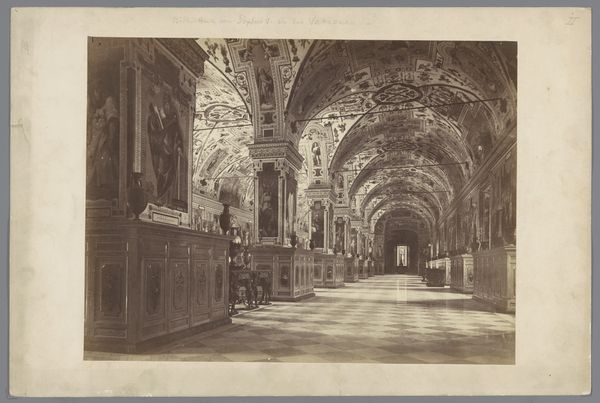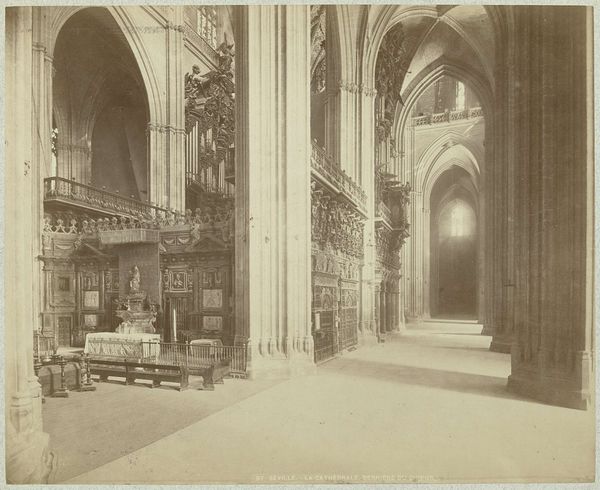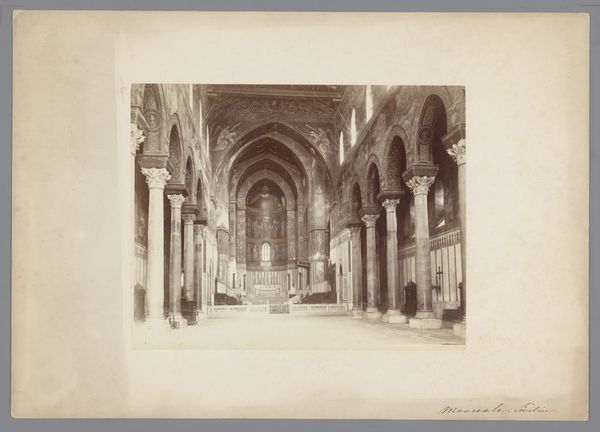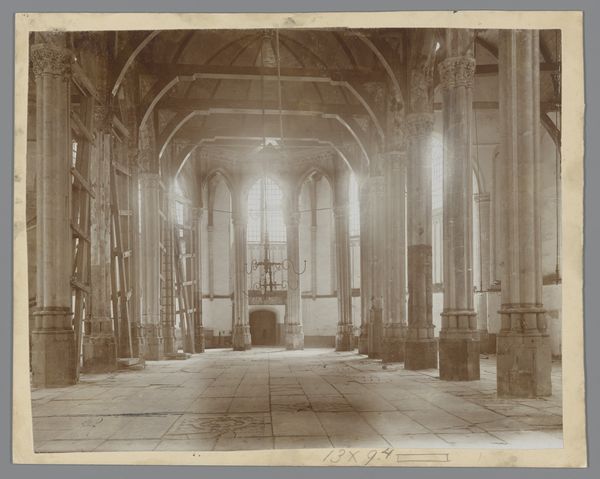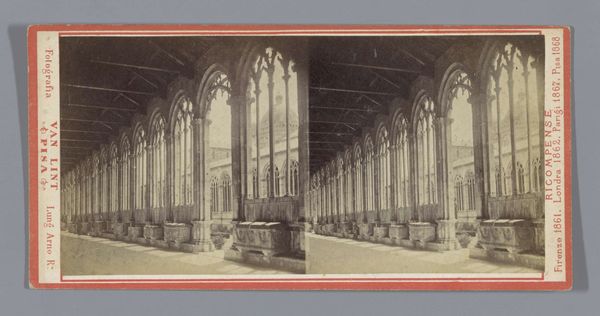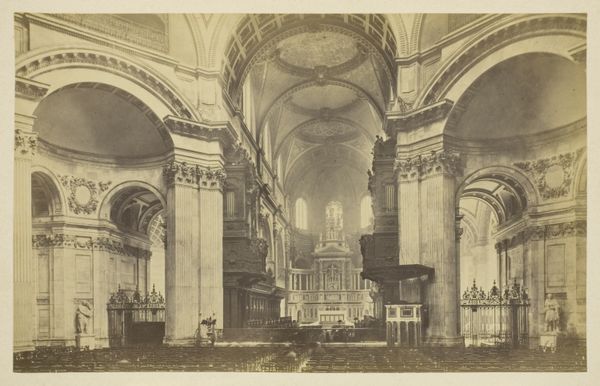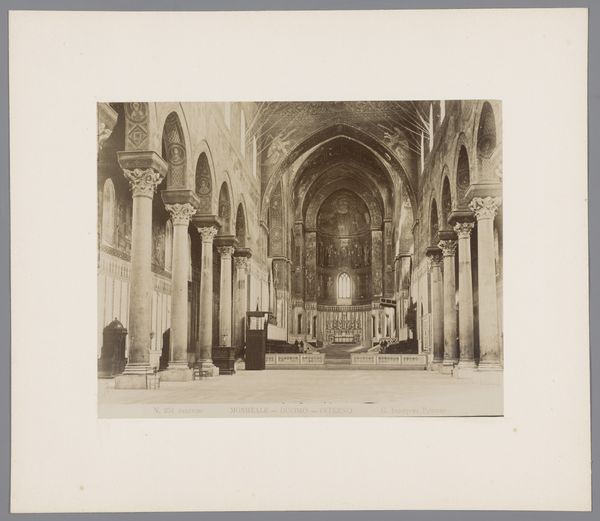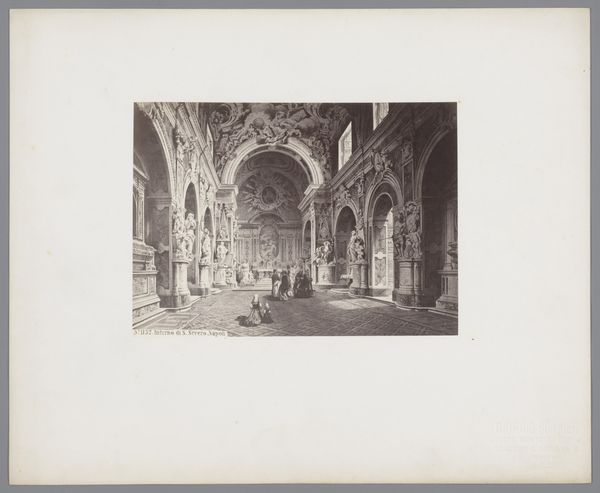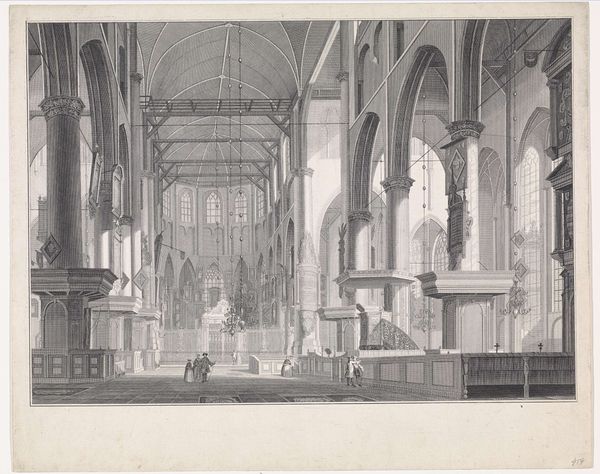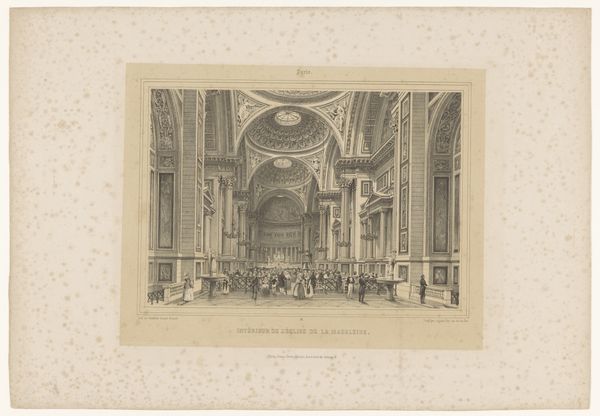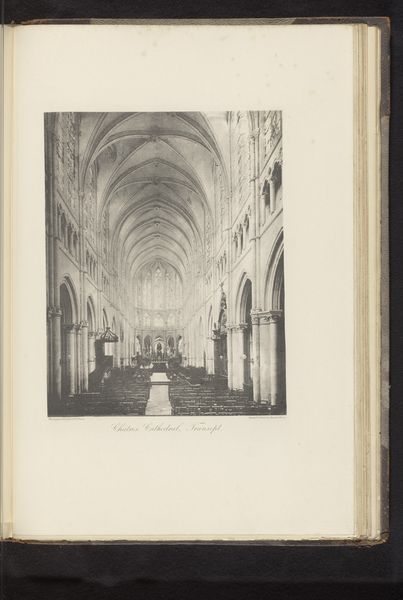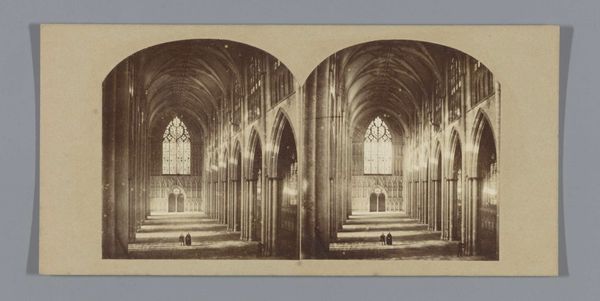
print, photography, gelatin-silver-print, architecture
#
photo of handprinted image
# print
#
perspective
#
photography
#
gelatin-silver-print
#
architecture
Dimensions: height 257 mm, width 361 mm
Copyright: Rijks Museum: Open Domain
Editor: This gelatin-silver print, titled "Interior of Saint Paul's Cathedral in London" by James Valentine, was taken sometime between 1860 and 1880. I'm struck by how vast and empty the space feels in the photograph. What historical context might inform our understanding of this image? Curator: Excellent observation. This photograph emerges during a period of significant debates surrounding religion and national identity in Britain. St. Paul’s Cathedral, designed by Christopher Wren, was a powerful symbol of London's resilience after the Great Fire and a physical embodiment of Anglicanism. How does photography itself play into this socio-political context, do you think? Editor: It’s interesting to think about photography's role back then. Maybe it served as a way to democratize access to these grand spaces? Before photography, only those who could physically visit or afford painted depictions would have seen the cathedral interior. Curator: Precisely. The widespread circulation of photographs like this broadened access but also reinforced the cultural authority of institutions like the church and the architectural prowess of the nation. Notice the clean, organized layout. Editor: It’s also incredibly sterile, very unlike a gathering place. Were these photographs, taken in this period, staged or was this an accurate representation of that place? Curator: It’s important to consider how the photographer might have manipulated the scene, even unconsciously. Emptying the cathedral might serve to highlight the architectural grandeur, but also presents a curated, perhaps idealized view of religious space. The lack of worshippers alters the cathedral's function as a place of collective devotion into more of a monument of architectural and national pride. It subtly shifts the building's role within the public consciousness. Editor: So it's less about documenting a sacred space and more about constructing a particular narrative about the church? Curator: Exactly. It asks us to consider not just *what* is being photographed, but *why* and *how* the photograph is framed and circulated within society. This photo’s distribution influences societal beliefs regarding architecture and religion. Editor: I had only considered its aesthetic appeal, not its subtle role in constructing identity. Curator: The power of art lies not just in its beauty, but its ability to reflect and shape our world.
Comments
No comments
Be the first to comment and join the conversation on the ultimate creative platform.
